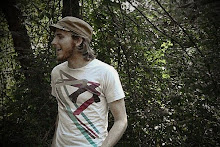And you are---?Notice anything peculiar about the flow of this text? It comes from William Faulkner's novel, Absalom, Absalom! and it's a Chiasmus. A what? A Chiasmus. A Chiasmus is a kind of poetic form where the structure of the verse is reversed and ends with the same word or idea with which it starts. Arranging like this will help you visualize it:
Henry Sutpen.
And you have been here---?
Four years.
And you came home---?
To die. Yes.
To die?
Yes. To die.
And you have been here---?
Four years.
And you are---?
Henry Sutpen.
And you are---?Did you know that the scriptures (especially in Hebrew) are full of these kinds of poems? I found one scholar who claims to have found over a thousand in the Old Testament alone. It's impossible to really know exactly how many there are due to the fact that sometimes they are easily lost in translation and while some are simple, some are incredible long and complex. One of the fascinating things about the original Hebrew language of the Old Testament is that writers did not use any kind of punctuation, or even vowels. Because of this, the only technique available to indicate the completion of one thought and the start of the next is a break in the line which, as you can imagine, is pretty limiting. But by using the concentric style of the chiasmus, the scripture writers were able to better group ideas and indicate the boundaries between them, and it sounds pretty. Here's one of my favorites from Genesis 7:21-23 that translates well into English (the ASV seems to capture it best):
Henry Sutpen.And you have been here---?And you are---?
Four years.And you came home---?And you have been here---?
To die. Yes.To die?Yes.To die.
Four years.
Henry Sutpen.
And all flesh died that moved upon the earth,
both birds,
and cattle, and beasts,
and every creeping thing that creepeth upon the earth,
and every man:all in whose nostrils was the breath of the spirit of life, of all that was on the dry land,
died.
And every living thing was destroyed that was upon the face of the ground,
both man,
and creeping things,
and cattle,
and birds of the heavens;
and they were destroyed from the earth.
Here's a short one from Jesus himself:
"But many who are first will be last, and many who are last will be first."These things are everywhere. Big and small. Now, here's where I may be stretching it a bit but as I began to think about this whole form of poetry, I began to think that, in some ways, the form itself is a kind of microcosm of the whole Kingdom narrative. In a way, the bible, or even creation in its entirety, is chiastic in nature. Here's what I mean:
-Matthew 19:30
In the beginning God created and it was good,In the Kingdom Chiasmus, creation in harmony with God is at the beginning and end, with Christ at the center of it all. Kinda cool, huh?but the people fell and hoped for a messiah.The messiah returns, the Kingdom of Heaven returns to earth in fullJesus comes and announces the Kingdom of Heaven,People put their faith in the messiah.
dies and then rises.
and God is with creation and it's good.


No comments:
Post a Comment